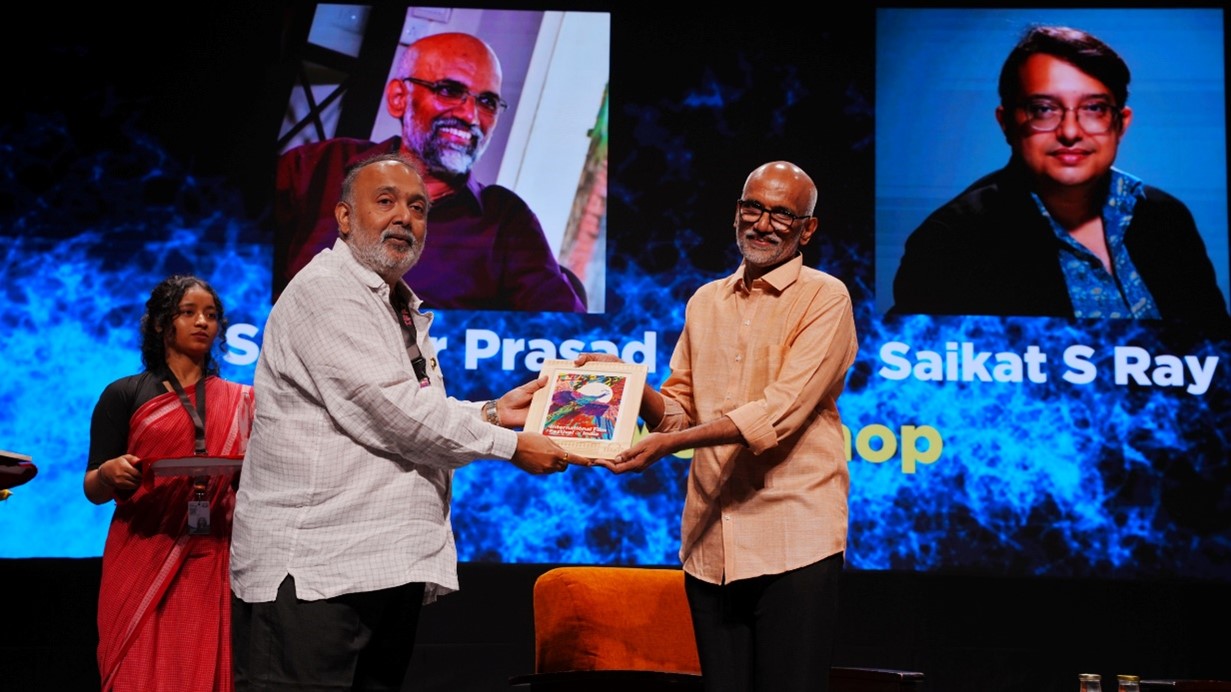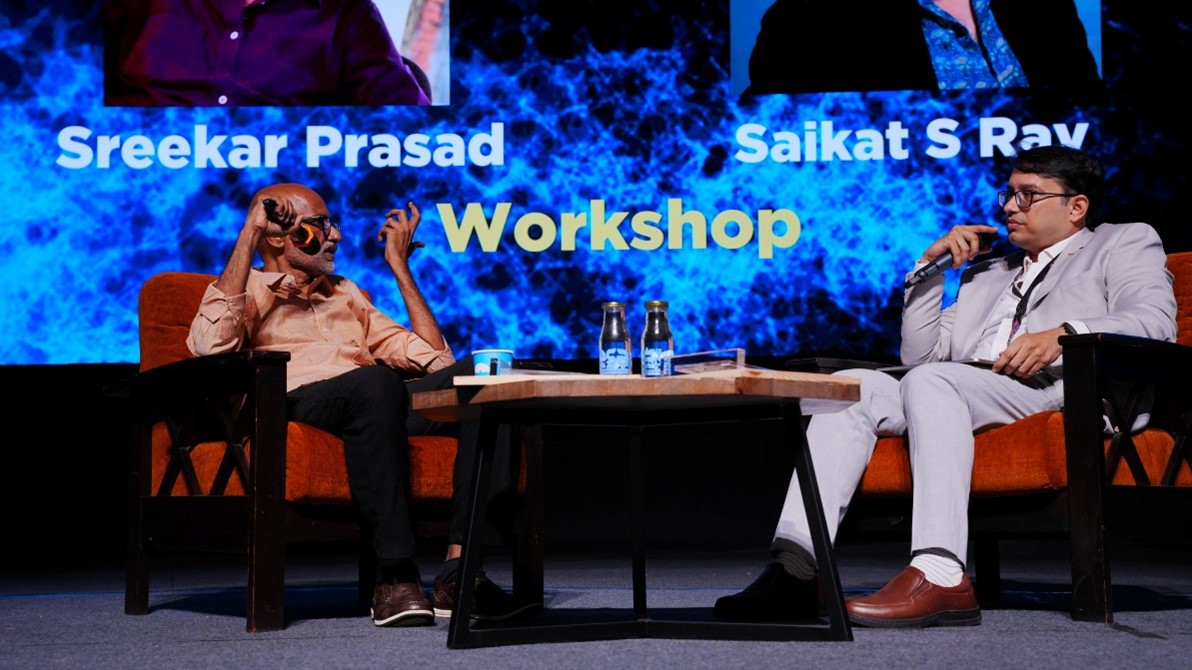A Journey Through the Edit Table: Sreekar Prasad Unpacks the Craft behind Cinematic Rhythm
Emotion, craft, and storytelling define the editor’s lens
Workshop explored the art of shaping performance, narrative, and visual
#IFFIWood, 24 November 2025
At the 56th International Film Festival of India, editor Sreekar Prasad led a workshop titled From Mind to Screen: Vision to Execution - An Editing Workshop, that drew the audience into cinema’s quietest yet most decisive space- the editing table, where scenes find balance and stories settle into form. With a filmography shaped across 650 titles and 18 languages, his presence carried the quiet wisdom of someone who has shaped stories across time, cultures, and countless edit rooms. Moderated by Saikat S Ray, the session offered a grounded understanding of the choices that carry a story from its first assembly to its final cut.
Before the session began, Ravi Kottarakara felicitated the master editor, applauding his vast body of work and his unique ability to know “what not to do”, a quality he described as the true essence of an editor’s intuition.

Speaking about his four- decade journey, Sreekar Prasad began by challenging the common understanding of editing as merely a technical exercise. Editing, he said, is rooted in emotion, and every cut must guide what the audience feels. While discussing the overwhelming volumes of footage an editor begins with, he stressed that the true test is to shape it in a way that lets the story move with intention and clarity, because the story is what holds a film together.
He emphasised that the best place for an editor to begin is at the script level, an involvement that shapes the entire filmmaking process. Though editing felt mechanical to him in the early years, working with different directors opened up new perspectives, no two days, he said, are ever the same. This constant shift in content and creativity slowly transforms an editor into a filmmaker, someone who knows when to withhold information, when to reveal it, and how to maintain narrative tension.

In a segment that drew keen interest, he spoke about the widely used belief that a film is “made on the editing table.” He described the evolving stages of assembling a film, that is from crafting individual sequences to navigating transitions and finally shaping the full-length narrative. Through clips from 1998 film ‘The Terrorist’, he demonstrated how silence itself became a tool of storytelling, a discovery that later shaped films like ‘Vanaprastham’. Every scene, he explained, must flow so seamlessly that the audience never notices the cuts.
On parallel narratives and multi-character arcs, he underscored the importance of emotional balance, reminding that audiences should never lose sight of the main story. He explained that an editor often has to protect a performance, not by showcasing it, but sometimes by carefully covering bad performances. When a character drifts away from truthful behaviour or slips into a star-like presence, he said, the edit must gently correct it, shaping the scene in a way that keeps the character’s integrity intact.

Touching on evolving tools, the moderator Saikat steered the conversation toward AI with a light remark that the first thing such a system would probably try to do is copy Sreekar Prasad’s “style.” The room laughed, and Sreekar responded with an easy smile before grounding the moment in clarity. AI, he said, can certainly take over the mechanical parts of the job, but it cannot sense emotion, feel a beat, or decide a cut from instinct. Editing, for him, remains a craft shaped by intuition, something no machine can replace.
As the session closed with reflections on patience, openness to critique, and the responsibility of shaping a scene’s ending, Sreekar Prasad described cinema as a social comment, an expression, a footprint left behind. For him, storytelling is not just creation, it is contribution.
In the end, the workshop showed that editing is where a film finds its truth, shaped not by what is added, but by what is chosen, refined, and quietly let go.
About IFFI
Born in 1952, the International Film Festival of India (IFFI) stands tall as South Asia’s oldest and largest celebration of cinema. Jointly hosted by the National Film Development Corporation (NFDC), Ministry of Information and Broadcasting, Government of India and the Entertainment Society of Goa (ESG), State Government of Goa, the festival has grown into a global cinematic powerhouse—where restored classics meet bold experiments, and legendary maestros share space with fearless first-timers. What makes IFFI truly sparkle is its electric mix—international competitions, cultural showcases, masterclasses, tributes, and the high-energy WAVES Film Bazaar, where ideas, deals and collaborations take flight. Staged against Goa’s stunning coastal backdrop from November 20–28, the 56th edition promises a dazzling spectrum of languages, genres, innovations, and voices—an immersive celebration of India’s creative brilliance on the world stage.
For more information, click on:
IFFI Website: https://www.iffigoa.org/
PIB’s IFFI Microsite: https://www.pib.gov.in/iffi/56/
PIB IFFIWood Broadcast Channel: https://whatsapp.com/channel/0029VaEiBaML2AU6gnzWOm3F
X Handles: @IFFIGoa, @PIB_India, @PIB_Panaji
* * *
 PIB IFFI CAST AND CREW | Sayyid Rabeehashmi/Nikhitha A S/Darshana Rane | IFFI 56 - 062
PIB IFFI CAST AND CREW | Sayyid Rabeehashmi/Nikhitha A S/Darshana Rane | IFFI 56 - 062
Release ID:
2193775
| Visitor Counter:
89